Search results
Jump to navigation
Jump to search
Page title matches
- 2 KB (215 words) - 14:44, 9 October 2013
- | chapter = Core description [[File:FG18CoreSt63Appendix3.JPG|thumb|300px|Core slab photo.<ref name=Ruppel_2012>Ruppel, Stephen C., 2012, [http://archives13 KB (1,786 words) - 20:50, 19 January 2022
- | chapter = Core handling ...ared before the core is pulled. Every effort should be made to prevent the core from weathering or changing if s fluid contents. Speed is important when ha7 KB (1,083 words) - 20:50, 19 January 2022
- | chapter = Core orientation ...rmined. Typically, a mark, groove, or line is placed on the surface of the core and the ''in situ'' [[azimuth]] of the marking is determined with respect t13 KB (1,964 words) - 20:50, 19 January 2022
- 2 KB (255 words) - 12:58, 6 August 2013
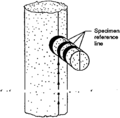
File:Core-orientation fig3.png (798 × 788 (11 KB)) - 22:38, 13 January 2014
File:Core-handling small.png (162 × 119 (34 KB)) - 13:17, 14 March 2014
File:Core-handling large.png (300 × 200 (98 KB)) - 19:02, 17 March 2014
File:Core-description fig1.png (1,879 × 2,521 (232 KB)) - 22:38, 13 January 2014
File:Core-description fig2.png (946 × 1,441 (37 KB)) - 22:38, 13 January 2014
File:Core-orientation fig1.png Typical assembly for mechanically orienting core.(456 × 2,212 (76 KB)) - 22:38, 13 January 2014
File:Core-orientation fig2.png (898 × 487 (8 KB)) - 22:38, 13 January 2014- | chapter = Core alteration and preservation ...losely as possible to virgin reservoir conditions. Thus, alteration of the core during recovery, wellsite handling, shipment, and storage must be minimized20 KB (2,971 words) - 15:46, 19 January 2022

File:Saskatchewan core storage facility.jpg (800 × 535 (252 KB)) - 16:48, 15 January 2014- | chapter = Overview of routine core analysis [[file:Box_core32.jpg|thumb|300px|Box of core samples, labelled and stored on site, [http://nc.water.usgs.gov/ccp/2003Eto14 KB (2,121 words) - 21:16, 19 January 2022

File:Core-alteration-and-preservation fig1.png ...e. (a)Oil-productive formation. (b) Gas-productive formation. (Courtesy of Core Laboratories, a Division of Western Atlas International}} ...e. (a)Oil-productive formation. (b) Gas-productive formation. (Courtesy of Core Laboratories, a Division of Western Atlas International.(1,954 × 1,054 (65 KB)) - 22:38, 13 January 2014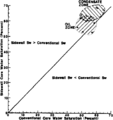
File:Overview-of-routine-core-analysis fig1.png ...shows that sidewall core values are almost always higher than conventional core values. Sample values from gas condensate zones are 10 to 15% higher, while(943 × 1,002 (17 KB)) - 22:39, 13 January 2014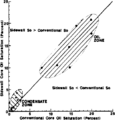
File:Overview-of-routine-core-analysis fig2.png ...y have measured oil saturation values that are 2% higher than conventional core samples. In oil zones the relationship is less clear. The agreement between(945 × 983 (19 KB)) - 22:39, 13 January 2014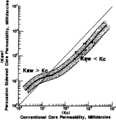
File:Overview-of-routine-core-analysis fig3.png ...e an indicated permeability greater than that determined from conventional core analysis. Sidewall cores from formations with more than 20 md permeability(945 × 979 (46 KB)) - 22:39, 13 January 2014- #REDIRECT [[Core-to-log transformations and porosity-permeability relationships]]81 bytes (6 words) - 15:37, 19 December 2014
Page text matches
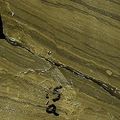
File:MainPageFG18CoreSt63Appendix3.jpg ...Permian) field, Permian Basin, Texas: AAPG Studies in Geology 63. Used on Core description article.(400 × 400 (104 KB)) - 16:14, 29 June 2015
File:Overview-of-routine-core-analysis fig3.png ...e an indicated permeability greater than that determined from conventional core analysis. Sidewall cores from formations with more than 20 md permeability(945 × 979 (46 KB)) - 22:39, 13 January 2014- * [[Core handling]] * [[Core alteration and preservation]]763 bytes (76 words) - 20:06, 16 January 2014

File:Overview-of-routine-core-analysis fig1.png ...shows that sidewall core values are almost always higher than conventional core values. Sample values from gas condensate zones are 10 to 15% higher, while(943 × 1,002 (17 KB)) - 22:39, 13 January 2014
File:Fishing fig6.png Core type basket.(665 × 1,029 (75 KB)) - 01:50, 14 January 2014- #REDIRECT [[Core-to-log transformations and porosity-permeability relationships]]81 bytes (6 words) - 15:37, 19 December 2014

File:Conventional-coring fig3.png Full-closure core catcher. (From Whitebay, 1986.)(866 × 1,469 (66 KB)) - 22:38, 13 January 2014
File:Core-orientation fig1.png Typical assembly for mechanically orienting core.(456 × 2,212 (76 KB)) - 22:38, 13 January 2014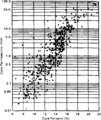
File:Conducting-a-reservoir-simulation-study-an-overview fig4.png Core measurements from the Bradford Sandstone. (From Levorsen, 1967.)(926 × 1,100 (24 KB)) - 18:46, 14 January 2014
File:Core-log-transformations-and-porosity-permeability-relationships fig2.png Plot showing shitted core porosity, together with bulk density log.(931 × 1,163 (74 KB)) - 18:05, 14 January 2014
File:Core-log-transformations-and-porosity-permeability-relationships fig1.png Plot showing unshifted core porosity in spiked format, together with bulk density log.(938 × 1,169 (73 KB)) - 18:05, 14 January 2014
File:Reservoir-modeling-for-simulation-purposes fig2.png Analysis of core data for facies identification and rock quality assessment.(1,955 × 545 (75 KB)) - 14:35, 14 January 2014
File:Box core32.jpg Box of core samples, labelled and stored on site, USGS Coastal Carolina Project 2003 -(800 × 600 (63 KB)) - 20:50, 30 June 2014- | {{ombox/core | {{ombox/core673 bytes (57 words) - 14:43, 9 October 2013

File:Evaluating-diagenetically-complex-reservoirs fig4.png ...raph displaying geological and petrophysical parameters of a well based on core description.(1,980 × 1,622 (338 KB)) - 18:46, 14 January 2014
File:Core-alteration-and-preservation fig1.png ...e. (a)Oil-productive formation. (b) Gas-productive formation. (Courtesy of Core Laboratories, a Division of Western Atlas International}} ...e. (a)Oil-productive formation. (b) Gas-productive formation. (Courtesy of Core Laboratories, a Division of Western Atlas International.(1,954 × 1,054 (65 KB)) - 22:38, 13 January 2014
File:M31F27.jpg ...uctures in mudflow deposit that caps a slump block. E. X-ray radiograph of core in normally deposited marine clays, which often cap the slump deposits. ote(760 × 1,372 (583 KB)) - 18:23, 18 August 2014
File:Core-log-transformations-and-porosity-permeability-relationships fig3.png ...rmation measured by the bulk density tool relative to that obtained from a core plug.(893 × 1,221 (82 KB)) - 18:05, 14 January 2014File:M91Ch6FG40.JPG Museum core on display. From Shepherd, M., 2009, Sources of data, in M. Shepherd, Oil f(600 × 402 (45 KB)) - 16:55, 3 June 2015
File:M31F7.jpg ...s and peat deposits are common in this environment. I. X-ray radiograph of core taken in backswamp deposit. Note the stringers of organic debris (dark laye(1,366 × 1,004 (1.31 MB)) - 19:50, 15 August 2014
